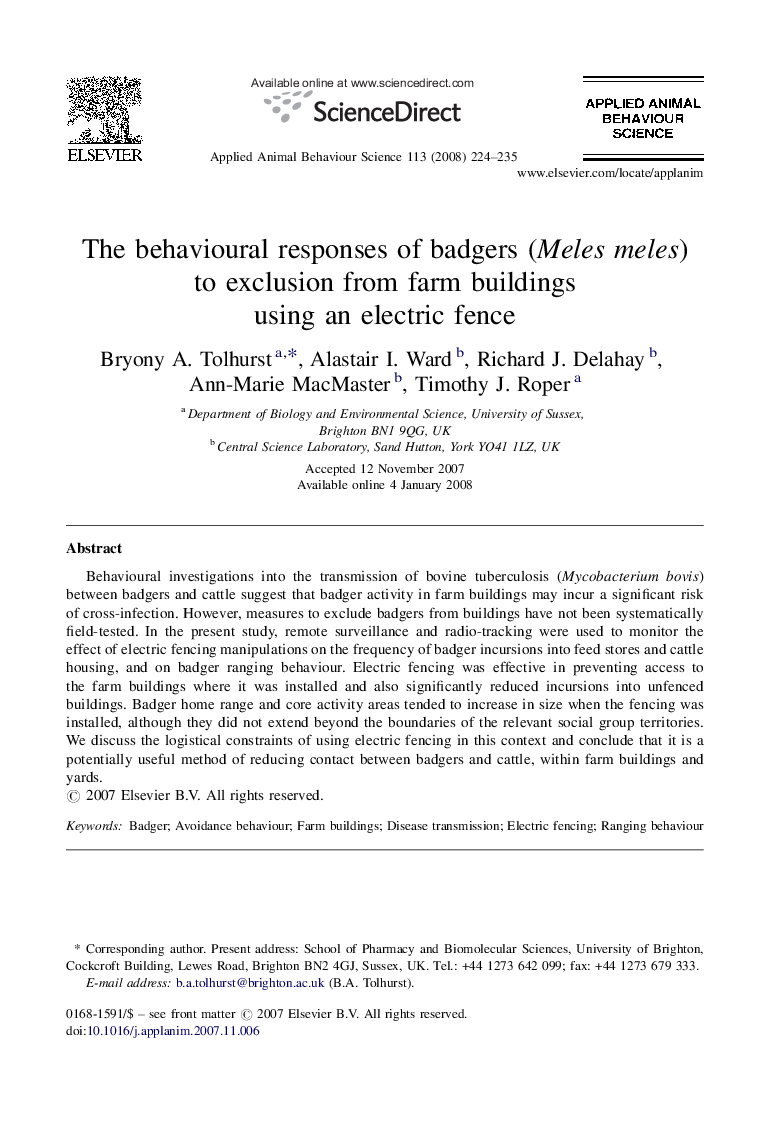| Article ID | Journal | Published Year | Pages | File Type |
|---|---|---|---|---|
| 4523625 | Applied Animal Behaviour Science | 2008 | 12 Pages |
Behavioural investigations into the transmission of bovine tuberculosis (Mycobacterium bovis) between badgers and cattle suggest that badger activity in farm buildings may incur a significant risk of cross-infection. However, measures to exclude badgers from buildings have not been systematically field-tested. In the present study, remote surveillance and radio-tracking were used to monitor the effect of electric fencing manipulations on the frequency of badger incursions into feed stores and cattle housing, and on badger ranging behaviour. Electric fencing was effective in preventing access to the farm buildings where it was installed and also significantly reduced incursions into unfenced buildings. Badger home range and core activity areas tended to increase in size when the fencing was installed, although they did not extend beyond the boundaries of the relevant social group territories. We discuss the logistical constraints of using electric fencing in this context and conclude that it is a potentially useful method of reducing contact between badgers and cattle, within farm buildings and yards.
